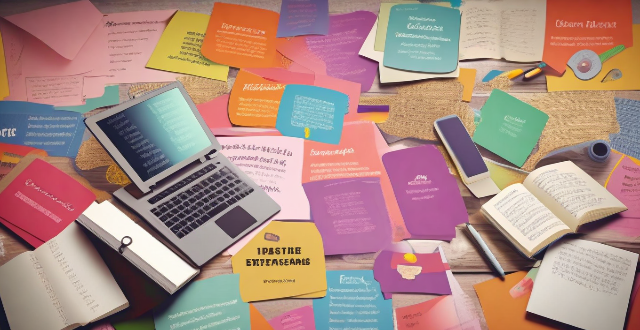The article discusses various strategies to make note-based learning more engaging and effective. The suggested approaches include interactive notebooks, active review techniques, digital integration, engaging activities, and regular revision schedules. Interactive notebooks involve color coding, diagrams, and margin notes for visual appeal and memory retention. Active review techniques such as teach it back, flashcards, and summarization help in understanding and recalling concepts better. Digital integration tools like note-taking apps, Quizlet, and online collaboration platforms aid in organizing and sharing notes. Engaging activities like role-playing, debates, and gamification elements promote kinesthetic learning and discussions. Regular revision schedules with spaced repetition, review tracking, and reflection time ensure long-term memory retention. By incorporating these strategies, studying from notes becomes a dynamic and engaging process that enhances both understanding and retention of the material.

Enhancing Engagement in Note-Based Learning
Studying from notes can often be a monotonous task, leading to disinterest and decreased retention. However, there are several creative ways to make this process more engaging and effective. Here are some strategies to transform your note-taking and reviewing experience:
Interactive Notebooks
1. Color Coding: Use different colors for main ideas, details, and examples. This not only makes your notes visually appealing but also aids in memory retention.
2. Diagrams and Drawings: Incorporate diagrams, mind maps, or sketches alongside the text to represent complex information visually. This approach helps in understanding and recalling concepts better.
3. Margin Notes: Jot down questions, connections to other topics, or personal reflections in the margins. These prompts serve as conversation starters with yourself, encouraging deeper thought.
Active Review Techniques
1. Teach It Back: Pretend you’re teaching your notes to someone else. This forces you to articulate your understanding and identify any gaps in knowledge.
2. Flashcards: Convert key points from your notes into flashcards. Use them for quick quizzes to reinforce learning and test your memory.
3. Summarization: Condense your notes into brief summaries or bullet points. This aids in distilling the essential information and enhances comprehension.
Digital Integration
1. Note-Taking Apps: Utilize digital tools like Evernote or OneNote to organize your notes. These platforms allow for multimedia integration, such as adding images or audio clips.
2. Quizlet: Create digital flashcards on Quizlet, which offers various learning modes like flashcards, learn, write, and test.
3. Online Collaboration: Share your notes with peers through Google Docs or similar platforms for collaborative study sessions where you can discuss and expand on each other's notes.
Engaging Activities
1. Role-Playing: Simulate scenarios related to your subject matter and act them out using your notes as a script. This method brings concepts to life and promotes kinesthetic learning.
2. Debates and Discussions: Form study groups where you debate different viewpoints or aspects of the material, using your notes as reference points.
3. Gaming: Incorporate gamification elements like point systems or rewards for achieving study milestones. For instance, after reviewing a section, reward yourself with a break or a small treat.
Regular Revision Schedules
1. Spaced Repetition: Spread out your review sessions over time. This technique, based on the forgetting curve theory, helps move information from short-term to long-term memory.
2. Review Tracking: Keep a log of what you’ve studied and when. This allows you to monitor your progress and ensures that all areas receive adequate attention.
3. Reflection Time: After each study session, take a few minutes to reflect on what you learned, how well you understood it, and how it connects to previous knowledge.
By incorporating these strategies, studying from notes becomes a dynamic and engaging process that enhances both understanding and retention of the material.